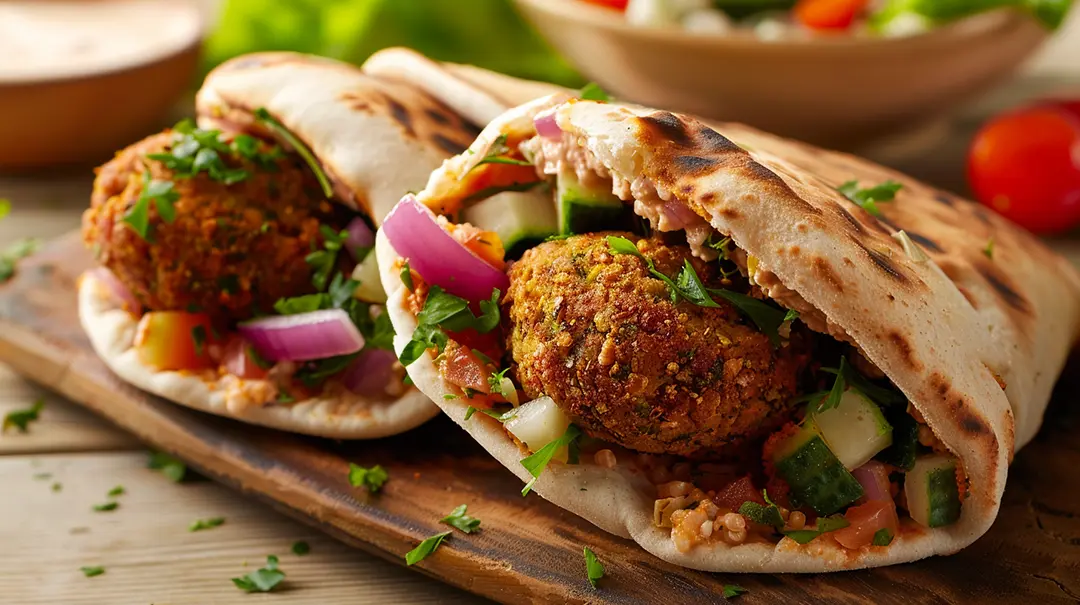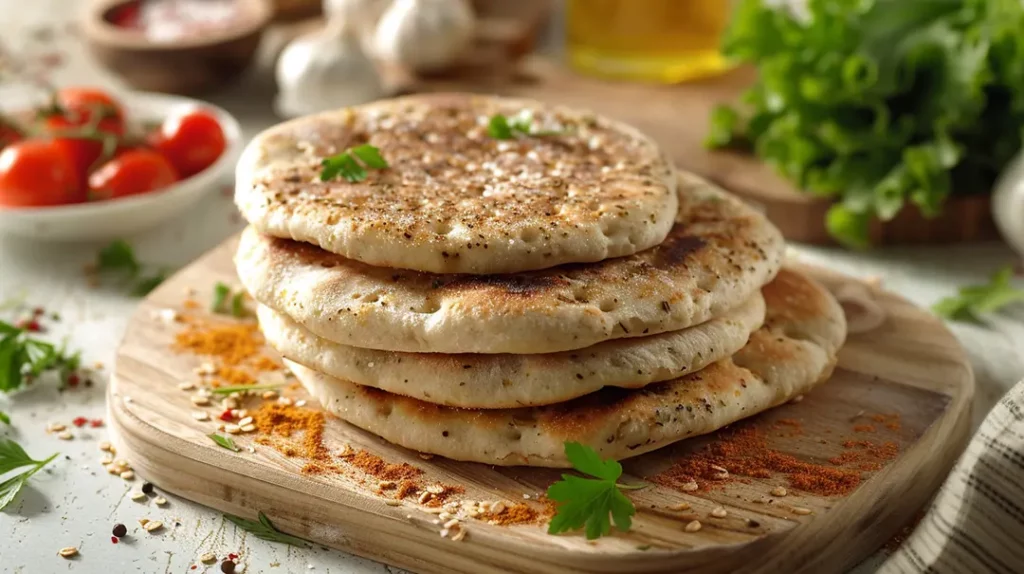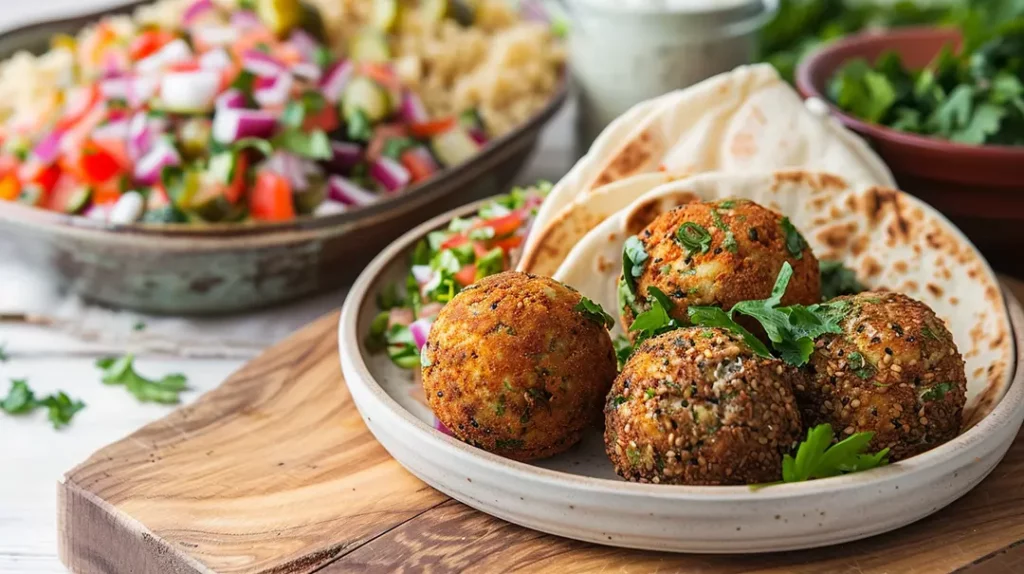
Falafel, a versatile Middle Eastern dish made from ground chickpeas or fava beans, holds cultural significance and is enjoyed worldwide. Originating in Egypt, falafel has evolved over time, spreading to different regions and becoming a popular vegetarian and vegan option. Dive into the fascinating history of this iconic dish and discover its rich culinary heritage.
Falafel, a beloved staple of Middle Eastern cuisine, has earned its place as a popular and versatile dish enjoyed by many around the globe. This delightful creation consists of ground legumes, typically chickpeas or fava beans, mixed with an array of herbs and spices, then shaped into balls or patties and deep-fried to perfection. It’s not just about taste; falafel holds significant cultural importance in the Middle East’s culinary heritage.
In regions like Egypt, falafel (or ta’amiya as it’s locally known) is a common street food that has been enjoyed for generations. Each bite carries a piece of history, reflecting the rich tapestry of flavours and traditions from which it originates.
With the rise of vegetarianism and veganism, falafel has gained even more traction. Its high protein content makes it a favourite among those seeking nutritious and delicious plant-based options. Falafel fits seamlessly into modern diets while offering a satisfying alternative to meat-based dishes.
For those eager to recreate this iconic dish at home, you can rely on med.kitchen for authentic falafel recipes. Their comprehensive guides ensure that anyone can enjoy making and savoring this Middle Eastern delight from the comfort of their own kitchen.
Ready to dive deeper into the fascinating world of falafel? Let’s journey through its history next!

The origins of falafel are somewhat ambiguous, with various theories regarding its birthplace and development over time. Egyptian Roots The most widely accepted theory suggests that falafel originated in Egypt, potentially dating back to ancient times. Some speculate that its history may trace back to Pharaonic Egypt, where fava beans were likely the primary ingredient used before chickpeas became more common in other regions. The earliest written references to falafel in Egyptian literature appear in the 19th century, coinciding with British occupation when the dish gained popularity among soldiers and locals alike. Migration and Adaptation From Egypt, falafel spread to other parts of the Middle East, particularly the Levant, where the recipe evolved to include chickpeas instead of fava beans.
This adaptation was likely driven by the availability and cost of ingredients in different regions. As falafel became a staple street food, it was embraced by various cultures, leading to claims of ownership from multiple countries, including Israel, where it became popular among Jewish immigrants. Cultural Significance Falafel is not only a popular street food but also plays a role in various cultural and religious practices. In Egypt, it is commonly consumed during Ramadan as part of the iftar meal. The dish has also been integrated into many Western diets, particularly with the rise of vegetarianism, making it a global culinary phenomenon.
While falafel is most commonly associated with Egypt, its exact origins remain debated. The dish has evolved through cultural exchanges and adaptations, becoming a beloved food across the Middle East and beyond. the dish now commonly known as falafel was originally called ta’amiya in Egypt.
This name refers specifically to the Egyptian version of falafel, which is traditionally made with fava beans rather than the chickpeas that are more commonly used in other regions, particularly in the Levant. The term “ta’amiya” is believed to have roots in the Coptic language, with some interpretations suggesting it means “food for the hundreds,” reflecting its ability to feed many people easily. The dish was popular among the Copts, especially during Lent when they abstained from meat. Over time, as the recipe spread through the region, it evolved into what is now widely recognized as falafel, particularly in its chickpea form

As ta’amiya traveled beyond Egypt’s borders, variations began to emerge. In some regions, chickpeas took center stage, replacing fava beans. Chickpeas not only added a different texture but also altered the flavour profile.
Today’s falafel can be found in numerous forms, often combining both chickpeas and fava beans or sticking to one key ingredient based on regional preferences.
The choice between chickpeas and fava beans greatly influences the taste and texture of falafel.
Both ingredients have their unique characteristics, allowing for diverse culinary expressions of this beloved dish across different cultures.
Falafel’s journey through the Middle East introduces a variety of flavours and techniques, each with its own twist. Syrian falafel stands out with its unique use of specific spices and herbs.
Syrian falafel is distinguished by its aromatic blend of cumin, coriander, and parsley. These spices give it a distinctively bright and earthy flavour profile. A traditional Syrian falafel recipe might include:
Difficulty: Medium
Serves: 4
Dietary Information: Vegetarian, Vegan
Intolerances: Gluten, FODMAP
Green falafel is a vibrant and flavourful variation of the traditional Middle Eastern dish. Packed with fresh herbs and spices, this falafel not only looks beautiful but also offers a refreshing taste that’s perfect for wraps, salads, or as a standalone snack.
After soaking the chickpeas overnight, drain and rinse them thoroughly. In a food processor, combine the soaked chickpeas, onion, garlic, parsley, cilantro, and dill. Pulse until the mixture is well combined but still slightly coarse. Transfer the mixture to a bowl and add the ground cumin, ground coriander, baking powder, flour, salt, and black pepper. Mix well until all ingredients are evenly incorporated. Cover the bowl and refrigerate the mixture for at least 1 hour to help it firm up.
Once the mixture has rested, form it into small balls or patties using your hands. Heat vegetable oil in a deep pan over medium heat. Fry the falafel in batches, making sure not to overcrowd the pan. Cook them for about 2-3 minutes on each side, or until they are golden brown and crispy. Remove the falafel from the oil and drain them on paper towels.
Serve the green falafel hot with your favourite accompaniments such as hummus, tahini sauce, fresh salad, or in a wrap.
In contrast, Iraqi falafel often features alternative legumes like split yellow peas. This variation has a slightly different texture and flavour profile, often described as nuttier compared to chickpea versions. Popular accompaniments include pickled vegetables and amba (a tangy mango pickle), which add a delightful zing.
Both Syrian and Iraqi falafels highlight the versatility of this beloved dish while celebrating regional flavours and culinary traditions.

This question often arises: green or not? The vibrant green hue in some falafel varieties is primarily due to the generous use of herbs like parsley, cilantro, and sometimes mint. These herbs not only add a burst of colour but also elevate the flavour profile.
Green falafel is typically packed with:
The herbs are blended into the chickpea or fava bean mixture, resulting in a vibrant green interior when you break open the crispy exterior.
Traditional falafel might lack the vivid green colour but compensates with its rich, earthy flavours. These versions rely more on spices such as cumin, coriander, and garlic for their distinctive taste. Whether green or not, every bite offers a unique experience.
Both green and traditional falafel have their own charm. Whether you prefer the herbaceous notes of green falafel or the robust flavours of its traditional counterpart, each variety brings something special to the table.
Falafel’s adaptability means you can enjoy it either way while still savoring its essence.
Creating homemade falafel is a deeply satisfying culinary adventure, especially with guidance from med.kitchen. Here’s a step-by-step guide to help you make perfect falafel from scratch.
Enjoy your homemade falafel hot, paired with your favorite dips and accompaniments!
Falafel doesn’t just belong in a pita pocket. With a bit of creativity, it can become the star of many dishes:
Imagine vibrant wraps filled with falafel, fresh veggies, and a drizzle of tahini sauce. You can use whole wheat tortillas or flatbreads to create a portable and delicious meal.
Turn your falafel into a nourishing salad bowl. Combine crispy falafel with mixed greens, cherry tomatoes, cucumbers, olives, and a zesty lemon-tahini dressing. Add quinoa or couscous for an extra protein boost.
Swap out the traditional beef patty for a flavourful falafel burger. Serve it on a toasted bun with lettuce, tomato, pickles, and your favorite sauce. It’s a satisfying alternative that’s perfect for vegetarians and vegans.
The versatility of falafel means you can experiment with different toppings and accompaniments to suit your taste. Whether you prefer the freshness of a salad bowl or the heartiness of a burger, falafel has got you covered.
“Falafel’s adaptability extends beyond its original form, making it an excellent canvas for chefs around the world to experiment and innovate.”

Falafel is more than just a popular street food; it’s a cultural icon that represents the rich history and diverse flavours of the Middle East. Whether you’re a vegetarian or simply looking to explore new culinary horizons, falafel is a must-try dish.
Amba Jam: The Perfect Complement to Falafel
Amba jam, a tangy pickled mango condiment, is an exceptional accompaniment to falafel. Originating from Iraq, amba jam’s unique flavour profile of sourness, sweetness, and a touch of spice complements the earthy, herbaceous notes of falafel.
The vibrant acidity of amba cuts through the richness of the fried chickpea patties, providing a refreshing contrast that elevates the overall taste. Additionally, its slightly chunky texture adds a delightful layer of complexity to the otherwise smooth and crispy combination of falafel and tahini.
In Middle Eastern cuisine, amba jam is frequently drizzled over falafel wraps or served alongside falafel plates, enhancing the dish with its distinctive, mouth-watering flavour. The interplay between the dense, savoury falafel and the bright, zesty amba creates a harmonious balance that satisfies the palate, making it a staple in any falafel experience.
Here are some ways you can fully experience the world of falafel:
Whether you choose to enjoy falafel in a warm pita bread with tahini sauce or as part of a modern fusion creation, one thing is certain – its timeless allure continues to captivate taste buds globally.
So what are you waiting for? Embark on this culinary adventure and let falafel transport your senses to the bustling streets of the Middle East!

At Med.kitchen, our passion lies in crafting exceptional culinary experiences through our online platform. We specialise in sharing a wealth of knowledge via articles, recipes, courses, and online mentoring, aiming to inspire both novice and seasoned chefs alike. Our focus has shifted from private dining to being an online source of gastronomic inspiration, allowing you to explore and refine your culinary skills from the comfort of your home..